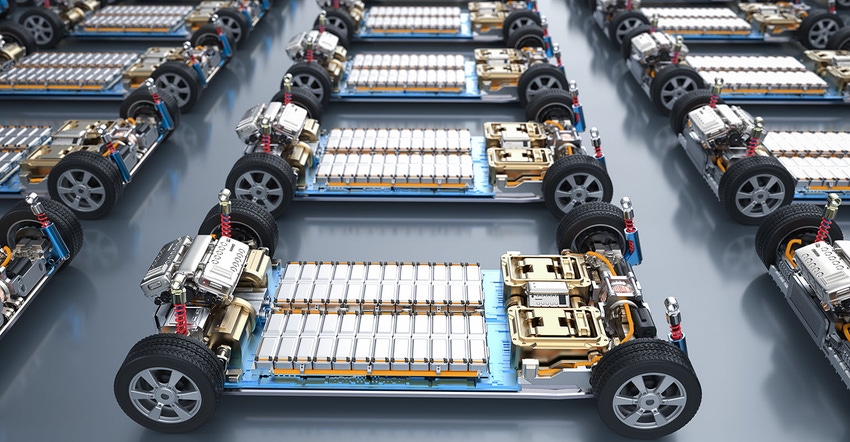Composites Drive Battery Lightweighting in EVs
IDTechEx report details innovations to increase energy density and lower cost through electric vehicle (EV) battery cell and pack materials.
May 15, 2023

Electric vehicles (EVs) generate very different material demands than internal combustion engine (ICE) vehicles. With ongoing supply chain disruptions and rapidly evolving battery technology, the materials that will be in demand over the coming years will vary significantly. IDTechEx has just released a report, "Materials for Electric Vehicle Battery Cells and Packs 2023-2033," that takes a deep dive into battery chemistry, energy density, and design evolution in order to determine demand from 2021 to 2033 for 27 different materials in markets such as electric cars, buses, trucks, vans, two-wheelers, three-wheelers, and microcars.
Despite trends toward increased energy density and less use of materials per vehicle, thanks to the rapidly growing EV market, demand for EV battery materials is forecast to grow more than 12-fold, with market value exhibiting a 26% compound annual growth rate between 2022 and 2033.
Plastics preferred over aluminum, steel in EV battery packs
While increasing the energy density of battery cells is of critical importance, construction of the battery pack as a whole also represents a great avenue to improve battery energy density. Key to reducing weight is the adoption of composites and polymers over traditional aluminum and steel.
Much of the battery structure is currently fabricated from aluminum, but many designs have adopted composite enclosure lids to reduce weight and form more complex shapes. There is a push toward multi-material battery enclosures to combine the benefits of the materials available. A key consideration for composite or polymer enclosures is electromagnetic interference (EMI) shielding and fire protection; this can be added later or integrated into the material itself.
Polyamide a key material in cooling systems
Thermal management is crucial to keeping cells at an optimal operating temperature and requires components such as cold plates and coolant hoses. Thermal interface materials are required to aid in heat transfer between the cells and the cooling structure. Preventing thermal runaway from propagating between the cells and outside the battery pack requires passive fire protection materials. How these thermal management materials and components are integrated is becoming simplified, especially with the adoption of cell-to-pack designs, but will remain as critical operating components with increased demand. Plastics such as polyamides are playing a key role in these cooling systems.
Adoption of cell-to-pack designs
The industry has also gradually reduced the quantity of materials used to package the cells, increasing the ratio of the pack's weight and volume that is accounted for by the cells. The step change in this regard is the adoption of cell-to-pack designs, where modular design is removed in favor of packing all the cells directly together. Despite the reduction in materials this causes, the rapid growth of the EV market means that many of the materials used in a battery pack will see increased demand.
The IDTechEx report forecasts materials used in cells and packs, including aluminum, steel, copper, lithium, cobalt, nickel, manganese, electrolyte, iron, phosphorous, binders, casings, carbon black, silicon, separators, carbon nanotubes, carbon-fiber-reinforced plastics, glass-fiber-reinforced plastics, thermal interface materials, fire protection materials, electrical insulation, cold plates, and coolant hoses.
About the Author(s)
You May Also Like




